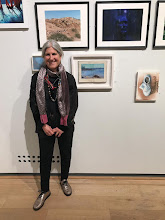
Why become part of the group?
We are inundated with things, but fail to connect with many of the characters for very long. In our drawers, on our mantles, we sequester some of our key objects. But what is it to know an object, and how does knowing happen?
In this time of consolidation, I wondered if spending time with ten objects - really looking at them, listening to them, feeling them and imagining their stories – whether relationships between them would happen and what their impact on me would be.
Are objects capable of depth of character? Can they change when they are understood more deeply? Are the more complex (shape, colour, line) more interesting over time, or will a shorthand develop to express these ten characters so that they will be equal? And how much will these characters be influenced by my mood, the season, light and time of day, for example? Will sharing the process of looking and representing with others make the process bigger and more meaningful?
I have no fixed ideas: I have simply found ten items that interest me and I am starting to explore them. As I draw my first object (a vase), I labour over the rim and wonder if a bad drawing day will make me dislike an object and avoid it, or will I be more determined and draw it repeatedly in lots of poses to make sense of it?
I come to this with a history: layers of ways of understanding objects have been built up over time. Morandi, Bonnard, Matisse, and others inform me. A show at Kettle’s Yard (Cambridge) in 1996: ‘The Language of Things’ helped me to think more deeply about the idea of still life. That together with years of looking may be the source of this exploration. Kenya and the habit of drawing an area around my house over a period of two years, watching the light and subtle changes of season, helped me to understand that there is nothing mundane in the familiar.
John Berger’s Ways of Seeing has helped me to understand my relationship with what I draw and what I see. For me, thinking creatively about the world around me, while being in it and representing it is key to my equilibrium. Finally Jennifer Bartlett’s In the Garden is a response to being in a place that is not inspiring. I live with inspiration all around me but do not always take the time to be with it; this is an attempt to make space to let that happen.




